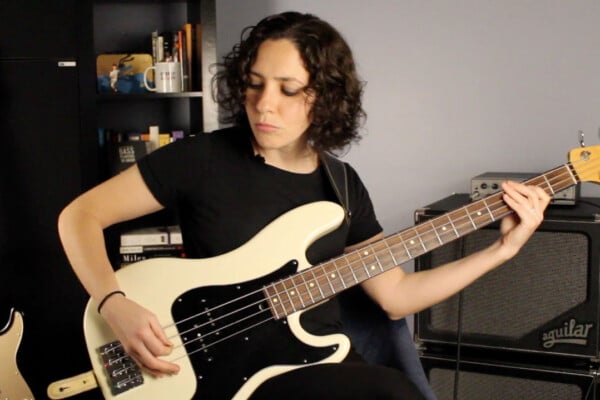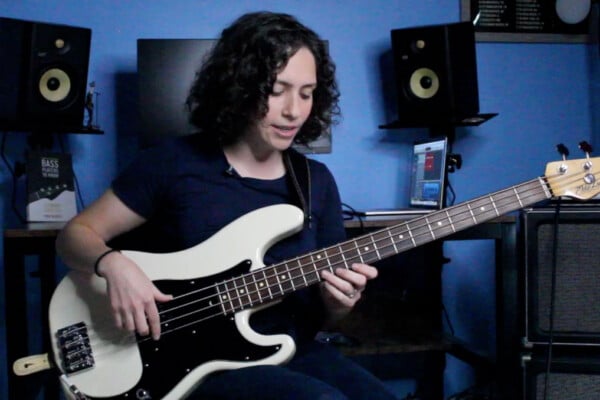Lesson: Accents, Dynamics and Balance
We’ve probably heard the word “dynamic” used to describe the work of musicians from time to time. It’s a compliment. Dynamic equals ‘interesting.’Changes in energy and intensity communicate feeling and add contrast to performance, and can add a sense of momentum and “swing.” Music without dynamics is dull; it sounds mechanical; without the injection of human energy, it might as well be a machine (as it so often is these days, unfortunately).
In order for dynamics to communicate, the stage must be set in terms of the overall sound environment. Levels need to be appropriate for the space, and the EQ needs to allow all of the frequencies to appear in balance.
A bassist can feel overwhelmed by the sound of others, a bad mix, or many other factors, resulting in a tendency to pull harder just to hear oneself. Sometimes a competitive sense-a kind of anxiety-can overcome the musician when it feels like their work is inaudible or being swallowed or drowned out by others. Sometimes the insecurity of the player leads them to play quietly. Sometimes the crowd is loud or inattentive. Sometimes the other musicians aren’t listening or are just playing too loud. If there’s no soundcheck (which happens too frequently even at major festivals and events) it can take a few tunes for the sound crew or other musicians to make adjustments. During this critical period it’s important for the musicians to keep in mind a recollection of what they sound like, and try to evaluate what changes may be needed so that their intention is communicated; it can be a very uncomfortable situation, requiring some faith at times that the others around have the same objective, which is to use all available means to get the sound adjusted so it communicates familiar sounds and feelings.
What if there is no sound check? A particularly useful technique for the bassist is to use a wide dynamic range in the beginning of a performance. The overall mix in a room should be built around the level of the bass, with the bass present enough to fill the space, but not so present as to overwhelm it and sound “boomy.” If it feels like the bass is not communicating, the cause is frequently the opposite of what we might be feeling; if the band is hearing loud bass from the back wall rather than from the amp or instrument, it’s going to create time problems and a sense that the bass isn’t communicating, resulting (possibly) in the urge to turn up the volume for the bassist.
Dynamics are important for more than just balancing, however. In a previous column we discussed the concept of “harmonic dynamics,” where more dynamic emphasis is given to oppositional events such as the V7 chords, or the ends of phrases. We also examined the accent patterns of the rhythmic substrate; these kinds of dynamics are helpful for the purpose of establishing balance levels as well. It’s often useful to underplay on the less-accented parts of the music so that a “quiet baseline” can be established; then contrasting, higher-accented sounds will define the upper end of the dynamic range so adjustments can be made accordingly and the space is not overwhelmed.



